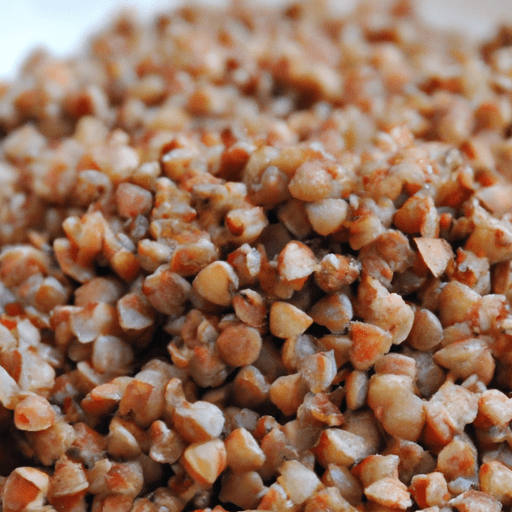The Versatile Goodness of Cooked Buckwheat
Cooked buckwheat, also known as kasha, is a nutritious and flavorful ingredient that has become increasingly popular in the culinary world. With its distinct taste, versatility, and health benefits, it is no wonder that this humble grain has found its way into the hearts and kitchens of many. In this blog post, we will explore the world of cooked buckwheat, delving into its taste profile, common culinary uses, nutritional value, and a few intriguing facts about its history.
Taste and Texture
Cooked buckwheat offers a nutty and earthy flavor that adds depth to a variety of dishes. It has a uniquely satisfying texture, striking a delightful balance between chewy and tender. This delightful combination makes it a versatile ingredient that can be used in both sweet and savory applications.
Culinary Uses
Salads and Grain Bowls
One of the most popular ways to enjoy cooked buckwheat is in salads and grain bowls. Its robust texture and ability to absorb dressings and flavors make it an excellent base for hearty salads. The nuttiness of buckwheat pairs perfectly with fresh vegetables, herbs, and tangy dressings, resulting in a satisfying and nourishing meal.
Soups and Stews
Buckwheat can also be a great addition to soups and stews, providing a wholesome and filling element to the dish. In Eastern European cuisines, it is commonly used in traditional recipes such as “kasha” or buckwheat porridge, often enjoyed as a warm and comforting breakfast option.
Sides and Pilafs
With its versatility, cooked buckwheat can be incorporated into various side dishes and pilafs. Mixed with sautéed vegetables, herbs, and spices, it makes for a delicious and nutritious accompaniment to roasted meats or grilled vegetables.
Baking and Porridge
Cooked buckwheat can also be ground into flour, which can then be used in gluten-free baking. This flour adds a distinct flavor and rich texture to pancakes, muffins, and bread. Additionally, cooked buckwheat can be enjoyed as a hearty breakfast porridge, topped with nuts, seeds, and sweeteners according to personal preference.
Nutritional Value
Beyond its culinary appeal, cooked buckwheat offers an array of health benefits. It is naturally gluten-free, making it an excellent alternative for those with gluten sensitivities or following a gluten-free diet. Buckwheat is rich in fiber, providing a boost to digestive health and promoting a feeling of fullness. It is also a good source of protein, making it a valuable addition to plant-based diets. Furthermore, buckwheat contains various essential nutrients, including vitamins, minerals, and antioxidants, contributing to overall well-being.
Interesting Facts and History
Did you know that buckwheat is not a grain but actually a fruit seed? It is related to rhubarb and sorrel, and its distinctive pyramid shape sets it apart from traditional grains. Buckwheat has a long history, believed to have originated in Southeast Asia more than 8,000 years ago, and eventually spreading to Europe and the Americas. In Eastern European cultures, it has been a staple food for centuries, celebrated for its nourishing properties and versatility.
In conclusion, cooked buckwheat’s nutty flavor, unique texture, and wholesome nutritional profile make it a fantastic ingredient to incorporate into a wide range of recipes. Whether enjoyed in salads, soups, sides, or baked goods, this adaptable ingredient is sure to delight the taste buds and provide a nourishing boost to any meal. Consider exploring the world of cooked buckwheat and discover the many ways in which it can elevate your culinary experience!
Interesting Facts about Cooked Buckwheat:
Origin: Buckwheat (Fagopyrum esculentum) is not actually a grain, but a fruit seed related to rhubarb and sorrel. It originated in the highlands of Southeast Asia, specifically in the Yunnan province of China, and has been cultivated for thousands of years.
Common Uses: Cooked buckwheat is a versatile ingredient that is used in a variety of dishes in different cuisines around the world. It is a staple in Eastern European and Russian cuisines, where it is often used in dishes like kasha, blini (Russian pancakes), and as a filling for dumplings. Buckwheat flour can also be used to make soba noodles in Japanese cuisine.
Nutritional Benefits: Buckwheat is highly nutritious and offers several health benefits. It is a good source of dietary fiber, protein, and essential amino acids like lysine. Buckwheat is also rich in various minerals such as magnesium, manganese, copper, and phosphorus. Additionally, it is gluten-free, which makes it suitable for people with gluten sensitivity or celiac disease.
Unique Properties: Buckwheat has a distinctive nutty flavor and a slightly earthy taste. When cooked, its seeds take on a tender, fluffy texture. Buckwheat is unique in that it contains a compound called rutin, which is a flavonoid known for its antioxidant properties. Rutin can potentially support cardiovascular health and reduce inflammation.
Historical Significance: Buckwheat has a long history and has been cultivated for thousands of years. Its popularity spread from China to Central Asia, Europe, and eventually North America. In many regions, buckwheat became an important staple crop due to its ability to grow in poor soil conditions and short growing seasons. It played a significant role in the diets of many communities, particularly in regions where other crops struggled to thrive.
Please note that these facts pertain specifically to cooked buckwheat and might not be applicable to raw buckwheat or other forms of the plant.




Use the share button below if you liked it.
It makes me smile, when I see it.